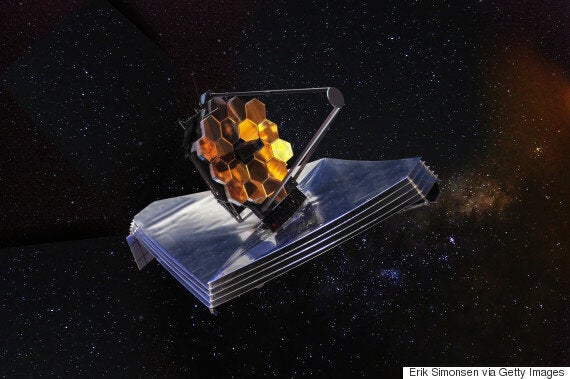The Hubble Space Telescope has smashed the cosmic distance record by capturing the furthest galaxy ever seen, GN-z11.

NASA's telescope was able to capture a small infant galaxy almost 13.4 billion old, meaning the image that we're seeing shows the galaxy as it was just 400 million years after the Big Bang itself.
To put that into perspective, the image shows the universe at just three per cent of its current age.

"We've taken a major step back in time, beyond what we'd ever expected to be able to do with Hubble." said principal investigator Pascal Oesch of Yale University in New Haven, Connecticut.
The discovery has come as quite a surprise to the scientific community after it was believed that only the upcoming James Webb Space Telescope would be powerful to look that far into the past.
SEE ALSO:
- The Hubble Space Telescope Has Orbited Earth For 25 Years. Here Are 25 Of Its Most Stunning Images
- NASA's Hubble Space Telescope Shows Off Jupiter In Stunning 4K Video
- Happy Birthday Hubble: 25 Years Of Opening Our Eyes To The Universe
- NASA's Hubble Telescope Discovers A Celestial 'Lightsaber' Created By A Newborn Star
- Hubble Captures An Entire Galaxy With Stunning New Picture
Scientists are able to determine these huge distances with precise accuracy thanks to a phenomenon known as the 'redshift'.
When light from a distant galaxy starts travelling towards Earth the wavelengths become stretched becoming longer and redder. By measuring the wavelength distances the scientists are then able to determine just how far the light has had to travel from its source.

The James Webb Space Telescope is expected look further into our universe than ever before.
Before GN-z11 was discovered the furthest that astronomers had been able to look into the past had been 13.2 billion years.
"This is an extraordinary accomplishment for Hubble. It managed to beat all the previous distance records held for years by much larger ground-based telescopes," said investigator Pieter van Dokkum of Yale University. "This new record will likely stand until the launch of the James Webb Space Telescope."